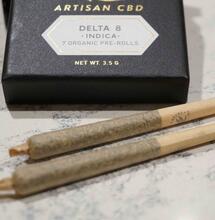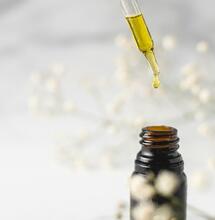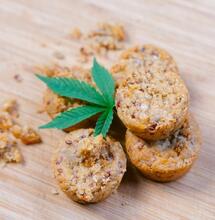Canna Cook It? Yes you can!

When cooking with cannabis, using a butter infusion is always a great option as cannabinoids bind best to fats, meaning you get more bang for your buck!
To make Cannabutter, you need regular unsalted butter. Use high-quality butter as it tastes better and contains less water and more fats. Cannabinoids bind best to fats, so a higher quality butter means a more potent end product. Here's an easy method for making canna butter
1. Finely grind all of your decarboxylated plant material.
2. Melt the butter steadily on low heat in a pan.
3. Add ground plant material to the butter and stir well.
4. Simmer for 45 minutes on low heat. Stir regularly to avoid burning the plant material.
5. Remove from the heat and pour the mixture through a fine metal strainer or cheesecloth to filter out the plant material. Pour the mixture into a jar or silicone moulds if you have them. Allow the butter to cool to room temperature, and then cover and store in the fridge until solid
7. Once solid keep in airtight containers or sealable freezer bags..
Cannabutter will keep for a month in an airtight refrigerated container or 3 months in the freezer. An ice cube tray is great to use as you can make individual portions.
Dosage
Making Cannabutter is easy; figuring out the correct strength is the tricky bit. On average, around 60% of the cannabinoids are extracted from the plant material when making Cannabutter. You also need to factor in a slight loss of THC, which is burnt off during decarboxylation.
Even when using the same amount of cannabis per batch, you will be at risk from many factors that can affect the final potency. Accurately dosing your at home is virtually impossible. However, there are some best practices that you can try to make an educated estimate of how potent your finished food may be.
For example:
Lets say i have 5g of Gelato, with an average THC strength of 20% or 200mg of THCA per 1g of Flower.
200mg x the 5g I have =1000mg THCA in total.
The conversion of THCA to THC is 0.88 so 1000mg x 0.88= 880mg.
880mg is the maximum THC that will be extracted during decarboxylation.
Ideally, you retain 60% of that THC when making dairy cannabutter.
So, 880mg x 0.6= 528mg. This is the maximum THC likely to be contained by your finished Cannabutter.
Finally, if your block of butter weighs, say, 500g, we can divide the 528mg by 500 to get the estimated mg of THC per 1g of Cannabutter. In this case it is 528mg/ 500g = 1.05mg per 1g of cannabutter
You can then use this information to dose your edible recipes responsibly. Simply substitute the correct amount of Cannabutter for regular butter. The generally accepted guidelines on potency are as follows;
New/inexperienced users: 1-5 mg per serving.
Those with a moderate tolerance: 5-10mg per serving.
Experienced edible veterans: 10-20mg per serving.
Bear in mind that this calculation is still just an estimate, and so your results may still vary. The best thing to do is approach with caution, regardless of how weak or strong you "think" your edibles are. Try a small sample piece and wait 1-2 hours to gauge the effects before you indulge any further. If anyone else will be eating your food, you should always make them fully aware of how strong it is.
For more about edible strength and how the body breaks them down check out this article.







